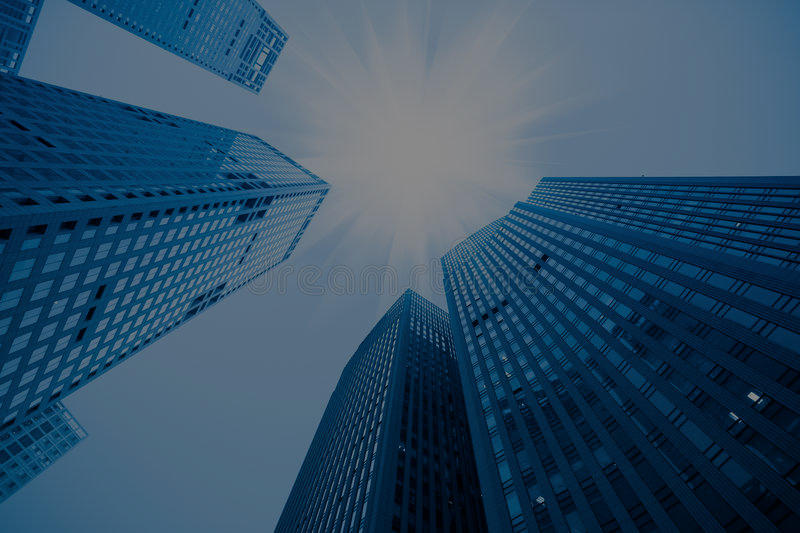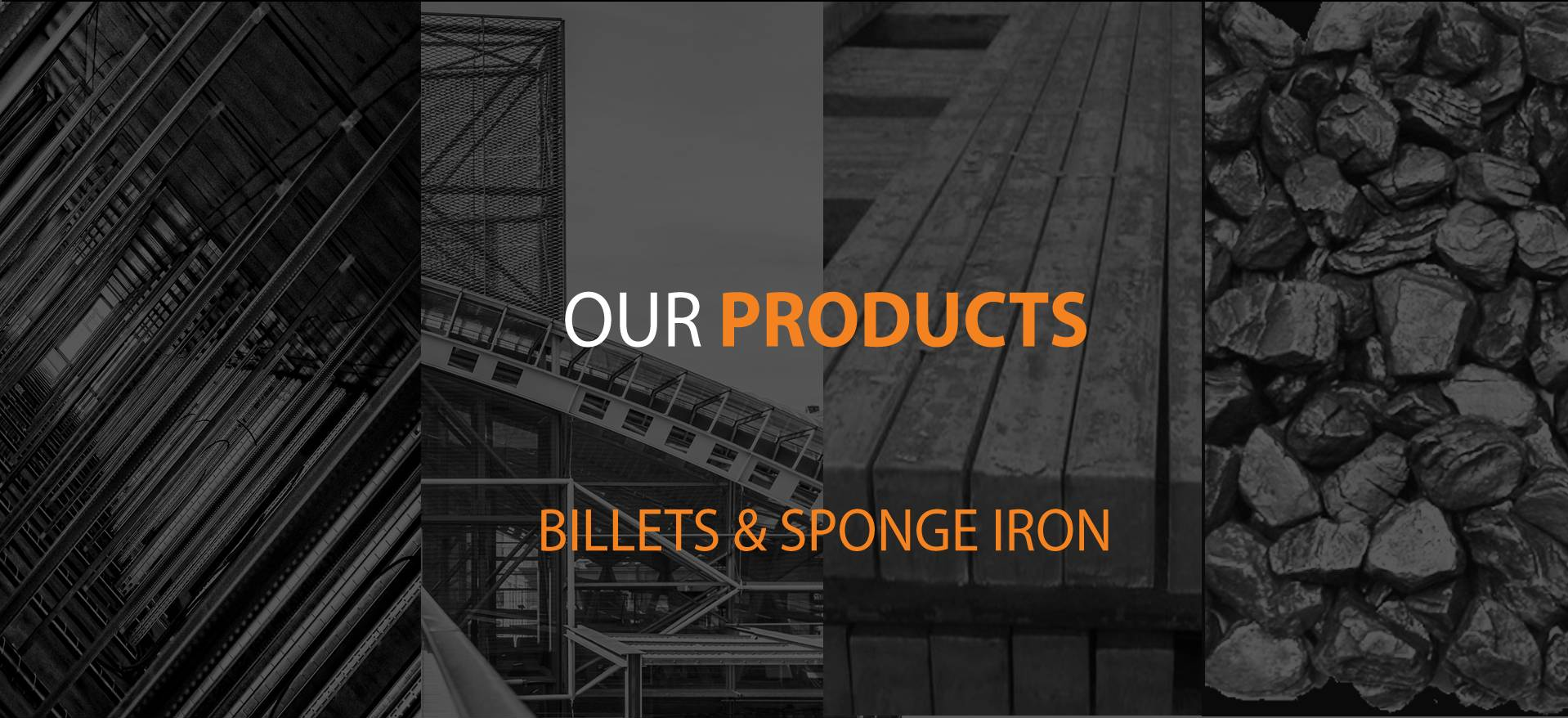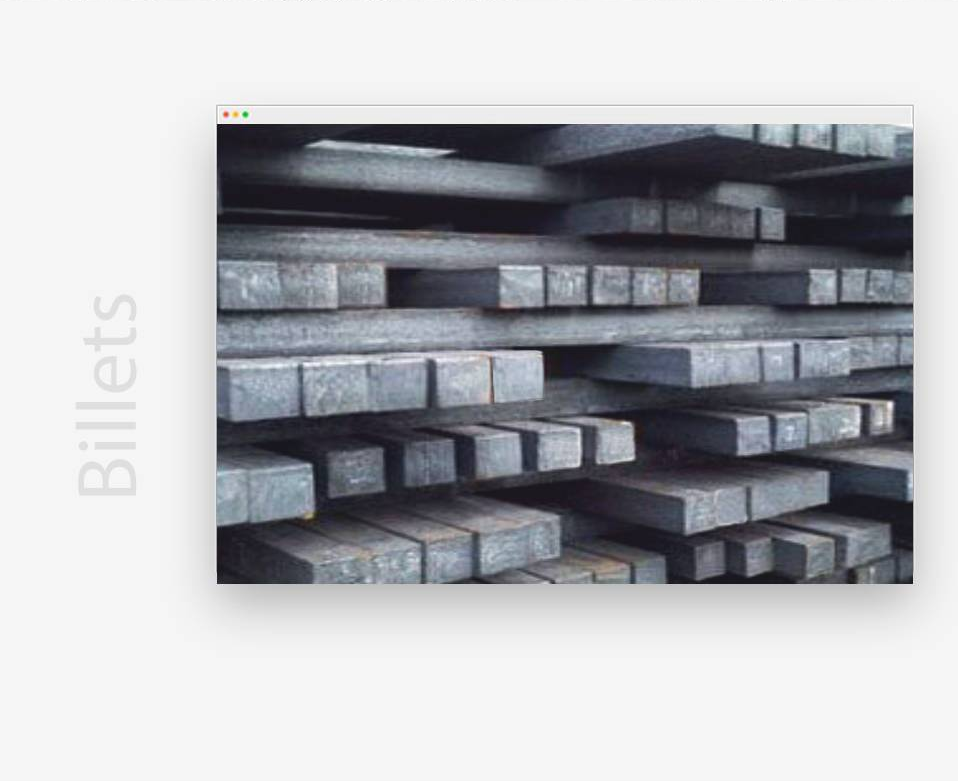






BILLETS : Characteristics
Amba Shakti has a capacity of producing over 900,000 MT of Billets annually.
AMBA SHAKTI manufactures all steel products from Billets through the induction furnace route. With an overall furnace capacity of more than 250 tones in total, the group has a capacity of producing over 900,000 MT of Billets annually.
An update from the traditional forging process, Billets are formed using continuous casting Machines (CCMs) and bear significant advantages to the forged Ingots not only in terms of quality but also in processes leading to apparent cost savings.
PROCESS
Procurement - The first step of billet production is of raw material procurement. Billets can be made using both steel scrap and sponge iron, In our integrated steel plants, sponge iron is produced in house and is the major raw material. In other plants, we use steel scrap in conjunction with the sponge iron in a ratio of 70:30 to charge the induction furnaces.
Processing - The procured steel scrap is sent for processing, where it is refined to remove unwanted articles (Rubber, plastic or dirt) and then segregated. The segregation stage separates the scrap which is directly chargeable (sent directly to the furnaces) from the rest which is either over-sized, or no dense enough to be directly chargeable. This scrap goes through a scrap processing machine which sizes and bundles the scrap ready for melting.
Melting- Once the scrap is processed, it enters the furnace. Using electrical induction charging, the copper wires, looped through the cylindrical container holding the scrap, induce heat causing the scrap in the container to melt into hot liquid metal. It is then poured into a ladle which transfers the liquid metal to the casting machine (CCM).
Casting- In the CCM, the liquid metal is poured into a water cooled mould after passing through a tundish where it is chemically treated to remove any impurities that may arise. The mould is open at both ends and is continuously withdrawn from the bottom at a controlled rate using support roles, all the while being cooled using water jets. When it comes out the metal takes the rectangular form of billets.
Shearing - The billets are cut to the required length at the shearing machine after which they are either stored for later use or more commonly sent directly for rolling to the mill.
PROCESS ADVANTAGES
- Ingot lengths and sizes show variations which lead to unwanted en-cutting and wastage. In continuous casting, the length of the billets can be controlled to minimize losses in end-cuttings.
- Higher extent of automation is possible.
- Width of billet can be adjusted for greater productivity.
- Continuous cast products show less segregation
- Hot direct charging of billet for rolling is possible leading to energy savings.
- Very fast partial hardening
- High production rates
- Significant reduction in pollution, distortion, forging scale, energy and space requirements.
- High degree of reproduction and automation.
SPONGE IRON: PROCESS
At AMBA SHAKTI, we produce 200,000 tons of sponge Iron annually using coal based reduction techniques.
Sponge iron is iron ore reduced directly in solid state using coal gasses, natural gasses or coke coal as reductants and is known as Directly Reduced Iron (DRI). It is a recognized alternative to Steel Scrap as a raw material for the manufacture of steel products. The process of making sponge iron aims at reducing oxygen levels in the raw iron ore. The quality of iron ore is determined by the amount of deoxidization performed. The final metallization percentage (ratio of metallic iron to the total iron) ascertains the grade of sponge iron.
The main furnace used in the reduction process is the Rotary Kiln, which essentially a furnace, is a refractory lined, long inclined cylindrical structure, into which all the raw materials and reducing agent (coal) are fed, The kiln is injected with continuous hot air and oxygen at varying temperatures from all sides, depending on the temperature requirement. At startup, a light-up burner is used at the kiln discharge end, which is oil fired to heat up the kiln. Coal is then injected from the outlet of the kiln to ignite the kiln. Once the desired temperature is reached, iron ore, reduction coal and limestone (usually dolomite) are fed from the feed end.
Since the kiln is inclined (2.5%) from the feed and downwards to the discharge end and keeps on rotating, the fed iron ore keeps on mixing with the coal. With the help of continuous oxygen injection the iron ore slowly gets reduced as it goes through the system. The rotary speed of the kiln is adjusted to suit the feed rate and the required percentage of metallization. The following chemical reactions take place in the kiln.
C+O2= CO2
C+O2+ C = 22CO
Fe2O3 +CO = Fe3O4+CO2
Fe3O4 +CO = FeO+CO2
FeO + CO = Fe (Metals)+CO2
Resulting in the following reduction chain:
2Fe2O3 -> 2Fe3O4 -> 6FeO -> 6Fe
Reduction:
(0%) (11%) (22%) (67%) -> 6Fe

This process gives out a lot of hot gasses. These gasses are recycled in the waste heat reduction boiler (WHRB), where they are processed and then sent off to the power plant. Here the gasses are used to rotate the turbines, thereby leading to generation of electricity. At AMBA SHAKTI, we have an installed captive plant capacity of 12 and 15MV at out integrated plants at Goa and Chandrapur respectively. The power generated at these plants is entirely through recycling waste gasses. This process leads to massive energy savings not only for the company, but for the society as well.
ADVANTAGES
- More volumetric weight:Usually (10-100%) more than other types of scraps
- Known uniform composition:Less variations in chemical compositions
- Low sulphur and phosphorus levels.
- Low content of dissolved gasses.
- Foamy slag:Capability of gorming protective cover of foamy slag in the bath